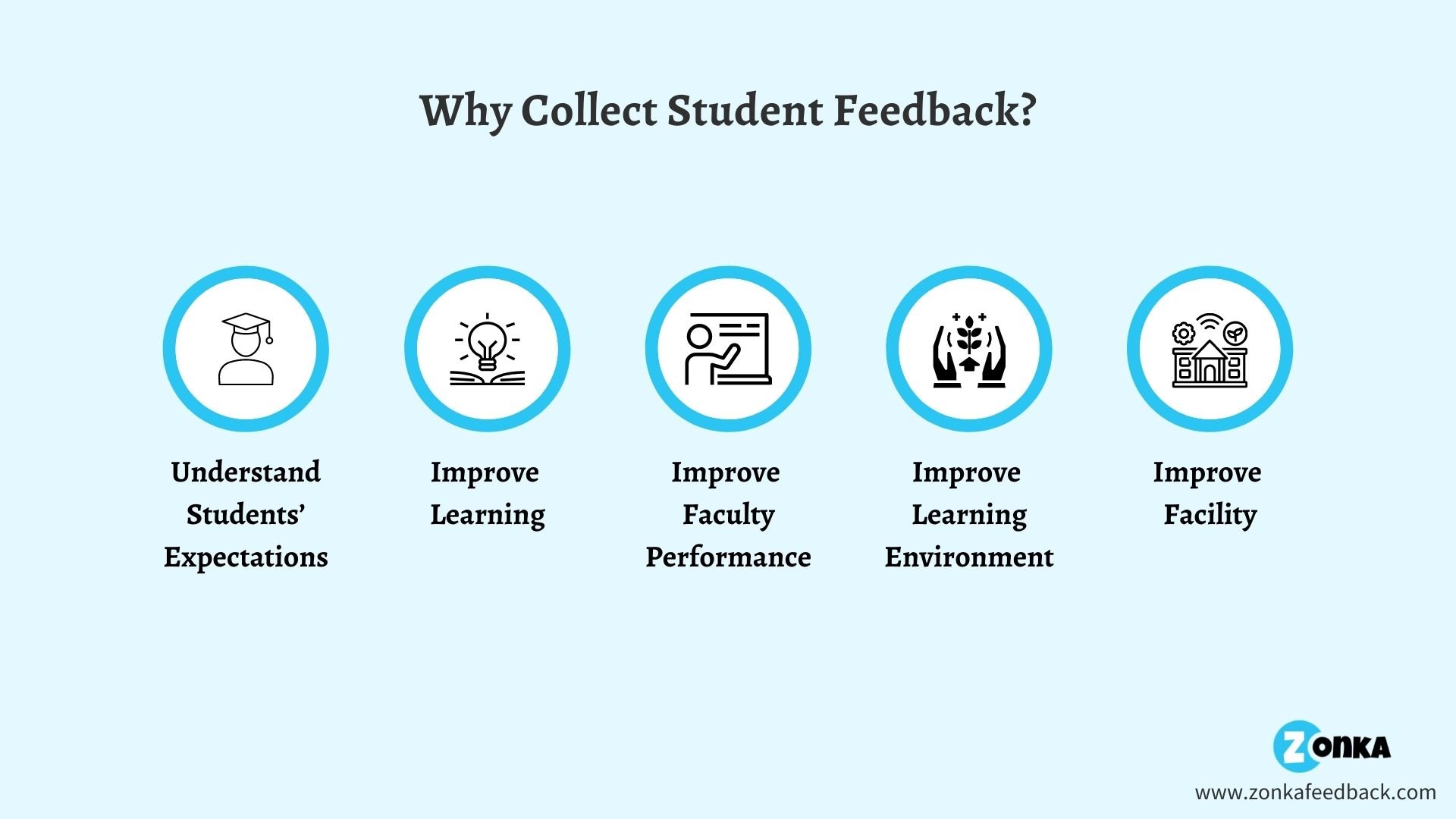Student Feedback System Presentation
| Introduction to Student Feedback System | ||
|---|---|---|
| A student feedback system is a tool that allows students to provide feedback on their learning experiences. It helps educators gather valuable insights to improve teaching methods and course content. Implementing a student feedback system promotes student engagement and empowers them to take an active role in their education. | ||
| 1 | ||
| Benefits of a Student Feedback System | ||
|---|---|---|
| Allows students to express their thoughts, opinions, and concerns about their learning experiences. Provides a platform for constructive feedback, helping educators identify areas for improvement. Enhances the learning environment by creating a culture of open communication and collaboration. | ||
| 2 | ||
| Types of Student Feedback | ||
|---|---|---|
| Formal feedback: Administered through surveys, questionnaires, or online platforms with specific questions and rating scales. Informal feedback: Informal conversations, suggestions, or comments shared by students during class or office hours. Continuous feedback: Ongoing feedback collected throughout the course to make real-time adjustments and improvements. | ||
| 3 | ||
| Collecting Student Feedback | ||
|---|---|---|
| Anonymous surveys or questionnaires: Protect student privacy and encourage honest responses. Focus groups or interviews: Provide an opportunity for in-depth discussions and clarifications. Digital platforms or learning management systems: Allow students to submit feedback conveniently and securely. | ||
| 4 | ||
| Analyzing and Acting on Student Feedback | ||
|---|---|---|
| Reviewing feedback data: Carefully examine the collected feedback to identify patterns, trends, and common themes. Prioritizing improvements: Address major concerns first and identify actionable steps for improvement. Communicating changes: Share feedback results with students and inform them of the actions taken based on their feedback. | ||
| 5 | ||
| Challenges in Implementing Student Feedback System | ||
|---|---|---|
| Low response rates: Encourage participation by emphasizing the importance of feedback and offering incentives. Bias or lack of constructive feedback: Educate students about the value of constructive criticism and set clear expectations. Time and resource constraints: Allocate sufficient time and resources to collect, analyze, and act on student feedback effectively. | ||
| 6 | ||
| Best Practices for Implementing a Student Feedback System | ||
|---|---|---|
| Establish clear objectives and goals for collecting student feedback. Ensure anonymity and confidentiality to encourage honest responses. Regularly communicate the importance of feedback and the impact it has on enhancing the learning experience. | ||
| 7 | ||
| Examples of Student Feedback System Tools | ||
|---|---|---|
| Google Forms: A free and user-friendly tool for creating online surveys and questionnaires. Blackboard: An online learning management system that includes built-in feedback features. Qualtrics: A comprehensive feedback platform with advanced analytics and reporting capabilities. | ||
| 8 | ||
| Case Study: Successful Implementation of Student Feedback System | ||
|---|---|---|
| University X implemented a student feedback system, resulting in a 20% increase in student engagement and satisfaction. The feedback system enabled faculty members to make targeted improvements in their teaching methods and course content. As a result, student performance and academic outcomes significantly improved. | ||
| 9 | ||
| Conclusion | ||
|---|---|---|
| A student feedback system is a valuable tool for enhancing the learning experience and improving teaching methods. By implementing a student feedback system, educational institutions can create a culture of collaboration, communication, and continuous improvement. Emphasizing the importance of student feedback and acting upon it can lead to increased student engagement, satisfaction, and better academic outcomes. | ||
| 10 | ||








